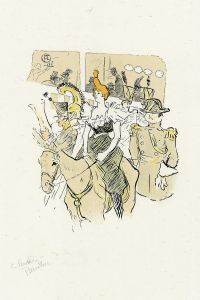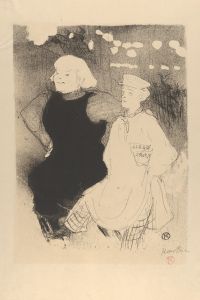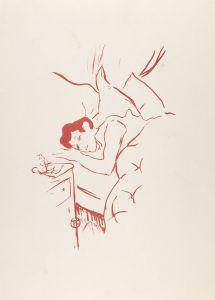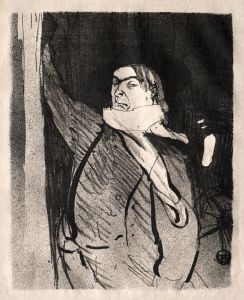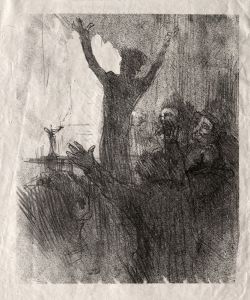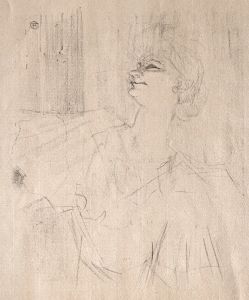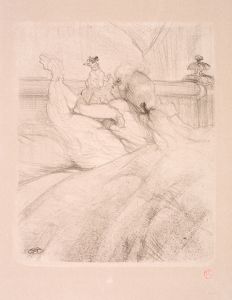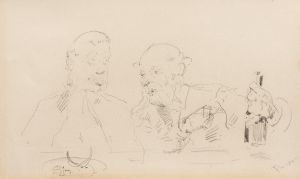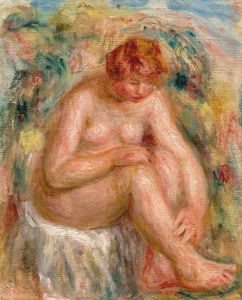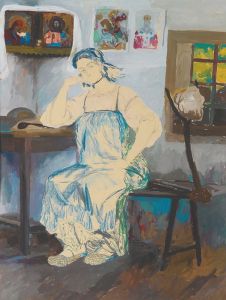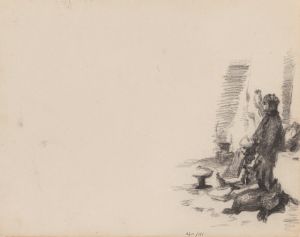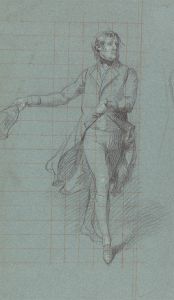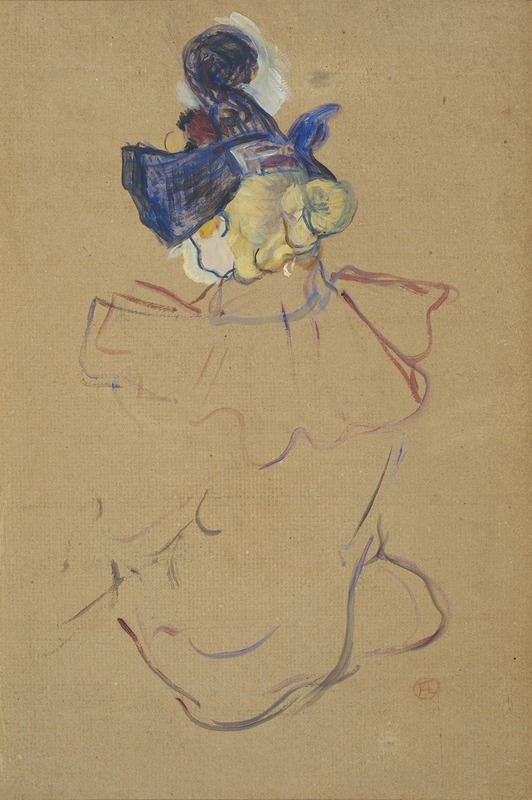
Seated Woman from Behind – Study for ‘Au Moulin Rouge’
A hand-painted replica of Henri de Toulouse-Lautrec’s masterpiece Seated Woman from Behind – Study for ‘Au Moulin Rouge’, meticulously crafted by professional artists to capture the true essence of the original. Each piece is created with museum-quality canvas and rare mineral pigments, carefully painted by experienced artists with delicate brushstrokes and rich, layered colors to perfectly recreate the texture of the original artwork. Unlike machine-printed reproductions, this hand-painted version brings the painting to life, infused with the artist’s emotions and skill in every stroke. Whether for personal collection or home decoration, it instantly elevates the artistic atmosphere of any space.
Henri de Toulouse-Lautrec, a prominent French painter and illustrator, is renowned for his depictions of the vibrant and often bohemian life of Paris in the late 19th century. One of his notable works is "Seated Woman from Behind – Study for ‘Au Moulin Rouge’," which serves as a preparatory study for his larger and more famous painting, "At the Moulin Rouge."
This study, like many of Toulouse-Lautrec's works, captures the essence of Parisian nightlife, focusing on the iconic Moulin Rouge cabaret. The painting features a woman seated with her back to the viewer, a perspective that invites curiosity and speculation about her identity and role within the scene. The choice to depict her from behind is characteristic of Toulouse-Lautrec's interest in unconventional compositions and his ability to convey mood and character through posture and setting rather than facial expression.
Toulouse-Lautrec was deeply embedded in the Montmartre district of Paris, where the Moulin Rouge was located. This area was a hub of artistic and social activity, attracting a diverse crowd of performers, artists, and patrons. The Moulin Rouge itself was a symbol of the Belle Époque, known for its lively entertainment, including the famous can-can dance. Toulouse-Lautrec's frequent visits to the cabaret provided him with ample inspiration and subject matter, allowing him to capture the dynamic and sometimes decadent atmosphere of the time.
In "Seated Woman from Behind – Study for ‘Au Moulin Rouge’," Toulouse-Lautrec employs his distinctive style, characterized by bold outlines and a keen attention to detail. His use of color and line work suggests movement and energy, even in a seemingly static pose. The study likely served as a means for Toulouse-Lautrec to experiment with composition and form, exploring how different elements could be arranged to create a compelling narrative within the final painting.
The study is an example of Toulouse-Lautrec's ability to convey the complexities of human interaction and the subtleties of social environments. By focusing on a single figure within a larger context, he draws attention to the individual stories and experiences that contribute to the overall tapestry of life at the Moulin Rouge. This approach reflects his broader artistic philosophy, which sought to capture the authenticity and immediacy of modern life.
Toulouse-Lautrec's work, including this study, is celebrated for its innovative approach and its contribution to the development of modern art. His paintings and illustrations offer a window into the cultural and social dynamics of his time, providing valuable insights into the world of late 19th-century Paris. "Seated Woman from Behind – Study for ‘Au Moulin Rouge’" is a testament to his skill as an observer and chronicler of the human condition, highlighting his unique ability to blend artistic technique with a deep understanding of his subjects.
Today, Toulouse-Lautrec's legacy endures, with his works continuing to be studied and admired for their artistic merit and historical significance. His portrayal of the Moulin Rouge and its patrons remains an iconic representation of a bygone era, capturing the spirit and vibrancy of a pivotal moment in cultural history.






